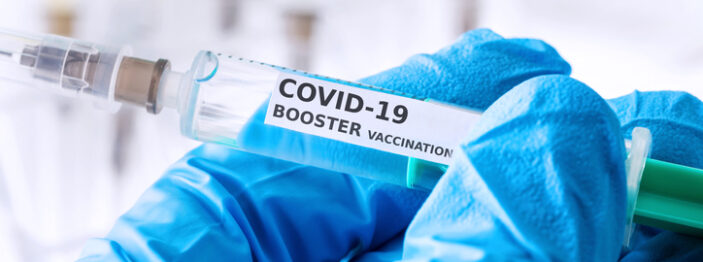COVID booster – today or delay?
The Canadian National Advisory Committee on Immunization (NACI) is recommending a booster shot this fall for people at risk of severe COVID infection (www.canada.ca/content/dam/phac-aspc/documents/services/immunization/national-advisory-committee-on-immunization-naci/naci-summary-june-29-2022.pdf). At-risk groups include those older than age 65, anyone living in a group setting (e.g. nursing homes, prisons), indigenous peoples and people of colour.
NACI also states that anyone aged 12 or older may be offered a booster this fall. The NACI recommendations were made at the end of June. Since then, two provinces have declared that a seventh wave of COVID infections has begun.
Between December 2021 and May 2022, an estimated 17 million Canadians were infected with COVID. The upswing in cases (the sixth wave?) was due to the Omicron variant. However, the seventh wave is being driven by an Omicron subvariant called BA.5. While this version of the CoV-2 virus does not appear to cause more serious illness, it is more highly transmissible and can infect people who have had COVID or been fully vaccinated.
Booster shots, ideally administered six months after the last vaccination, are intended to boost the waning immunity from those initial shots and lower the risk of serious illness.
There is some evidence to suggest that people with MS have a higher risk of COVID, especially if they are taking a medication (e.g. Ocrevus, Rituxan) that suppresses their immune response. So a booster shot will provide some needed extra protection.
While the NACI recommendations provide some guidance, the rapid spread of BA.5 has outpaced the experts’ opinion and left an important question unanswered. Is it better to get a booster shot now, or should you wait until the fall when a better vaccine may become available?
One company, Moderna, has a few retooled vaccines in development. The company’s initial vaccine (called mRNA-1273) was developed against the original strain of COVID. The new vaccines contain antigens from more than one virus strain (called bivalent, trivalent, etc. depending on the number of strains), a strategy used in other vaccines (such as the flu vaccine). The first candidate combined the original vaccine with an early variant that has not been seen lately so it already seems outdated.
However, a second candidate (called mRNA-1273.214) combines the original vaccine with the Omicron variant. One study has been done but no results have been published. Moderna stated in a press release that it has submitted its results to regulators and hopes to get approval by the end of the summer.
That may be optimistic. In early July, the U.S. Food and Drug Administration (FDA) stated that vaccine manufacturers will need to include part of the BA.5 subvariant (Rubin R. JAMA, epublished July 8, 2022). Moderna’s new vaccine in development does not specifically target BA.5 so it may need to be tweaked again. That could be accomplished relatively quickly with current vaccine technology, but it could mean a delay of several months before it could be tested and approved.
While the new-generation vaccines appear to be somewhat more effective in boosting the immune response than the original vaccine, this difference may not mean much in the real world. A booster shot with the original vaccine has been shown to provide protection against COVID variants (including Omicron). A further consideration is that by the time a BA.5-enhanced vaccine becomes available, another variant may have emerged.
So it appears that for people wondering when to get a booster shot, it may be a better strategy to get whatever is available as soon as possible rather than wait for a next-generation booster in the fall. People are generally eligible for a booster about three months after COVID infection, or six months (three months in some cases) after the last vaccination. Before booking a vaccination appointment, it is always advisable to talk to your neurologist and/or family doctor first.
Share this article
Facebook Twitter pin it! Email
Related Posts
Back





